

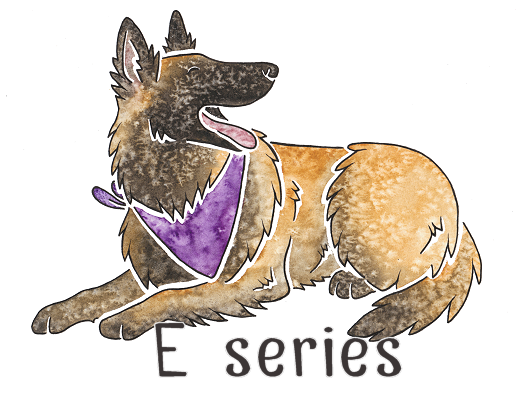

Already know what you're looking for? Quick Links | |
The E Series
"E" stands for "extension", and the E series is responsible for almost all non-agouti (A series) related eumelanin/phaeomelanin patterning in dogs. E helps to determine which areas of the coat can (and do) produce eumelanin (black/blue/liver/isabella) and which can (and do) produce phaeomelanin (red).
The dominance hierarchy of the E locus isn't known for sure yet, and there may also be as-yet-undiscovered alleles, but currently it's thought to look something like this:
Em - masked (the mask appears over the top of the A locus pattern - see below)
Masks
Eumelaninistic masks (black/liver/blue/isabella on the muzzle and sometimes the ears) are caused by the Em allele. It is the top dominant of the E series, so that means a dog only needs one Em allele to have a mask, regardless of which
other E locus allele it carries. Genotypes for masked dogs in most breeds are, therefore, as follows:
EmE - one mask allele, one normal extension allele
Masks can appear on any dogs that are genetically sable, tan-pointed, saddled or agouti (wolf grey). That means that the presence of
a mask on a dog with the mask gene depends on the A and K series. In order to display a mask, a dog cannot be dominant black (KBKB,
KBKbr, KBky) on the K locus, because dominant black stops the A series from being expressed, and obviously, a black mask on a black dog
is not going to be visible anyway. If a dog is brindle or non-black on the K locus, they can express the A locus, so will be sable, agouti, saddled, tan-pointed
or recessive black. All of these will show masks except for recessive black (again, a black mask isn't going to be visible on a black dog, even if it is technically there!).
Masks consist of eumelanin pigment, so they can be affected by any gene that changes the colour or intensity of eumelanin. This
means a mask will follow the main pigment of the dog and can be liver, blue or isabella, and can also show the merle pattern as well. There is one exception though - sometimes masks aren't affected by greying (at least,
not by the greying gene found in breeds such as the Kerry Blue Terrier). This is a strange
anomaly, and one for which there is currently no explanation.
On a tan-pointed (atat) dog, masks can be detected by looking at the facial points. Tan normally occurs on the sides of the muzzle and above the
eyebrows, but a dog with a mask may have all or part of these points covered up by the main coat colour. Usually, however, the tan on the neck is usually still visible.
Masks can vary greatly, covering anything from just the end of the muzzle to the whole of the muzzle, eyebrows and ears.
On sable dogs, black masks may also cause extra black hairs on the chest and/or the back and tail. Sables with black tipping often have black
masks, so it is possible that masks in fact cause some of this tipping. However, there is probably another modifier that helps with this, because
not all black-masked sables have extra black, and indeed, many breeds with masks come only in clear or almost clear sable (e.g. some Pugs).
Untestable Masking
Some breeds appear to be affected by a type of masking that looks very similar to an EM mask, but tests as E. The basis for this is not yet known. Examples of Masks
"Extreme" Masking and Etching
In a small number of breeds, masked dogs may have large amounts of shading on the chest and legs. The genetic basis of this is not known, and it could either be a modifier extending the mask, or a variation of the masking allele itself. The shading occurs on the underside of the dog, making it distinct from the shading on the top/back of the dog typically caused by sable (Ay).
There is a possible connection between extreme masking and "etching", which is when a sable piebald appears to have eumelanin edges to its patches, or when an irish spotted dog has eumelanin "borders" between its white feet/legs and main body colour. This is commonly seen in Akitas, St Bernards, and Anatolian Shepherd Dogs, all of which also often have heavy masking. It's possible that extreme masking causes the eumelanin-producing melanocytes to spread out to the edges of any phaeomelanin areas, which on a dog without white markings will be the legs/feet and chest. On a piebald or irish spotted dog, this will be the edges of the coloured areas.
Recessive Red
The other two main E locus alleles in most breeds are E (normal extension) and e (recessive red). Normal extension simply allows a dog
to express its other genes on other locii normally. To put it simply, it has no effect on the dog. Recessive red, however, produces a much more visible effect.
A dog that is homozygous for recessive red, so has the genotype ee, will be completely red. Its nose will remain black
(or liver, blue or isabella, whatever its eumelanin pigment colour is), and so will its eye rims and lips, but the rest of its coat will be solid red (with or
without white markings and ticking). This is because the recessive red gene, in effect, gives the skin cells a disability (but not a harmful one!) - it stops them from being
able to produce eumelanin. It is therefore impossible for a recessive red dog to have any black (or liver, blue or isabella) in its coat.
Recessive red, although recessive in its own series, is essentially dominant over almost all other loci. Dominant black, sable, tan points, wolf grey, merle, and any other pattern with black in it will be turned to solid red by the recessive red gene. This, in a way, is the danger of recessive
red - it can mask so much.
Recessive red only occurs in particular breeds, but many of these breeds also carry sable. A clear, unmasked sable can look extremely similar to a recessive red, so it is advisable to test before breeding if you are unsure which of the two patterns a dog is. Whisker colour can be one indicator - as recessive red dogs can't produce any black hairs, their whiskers should be red or light-coloured. However, this isn't a failsafe diagnostic as a liver-pigmented dog, for example, would have brownish whiskers that wouldn't necessarily be easy to tell apart from red.
It's important to note that there are currently three testable e alleles - usually labelled e1, e2, and e3. They all work in the same way, and it's not possible to tell them apart from the way a dog looks. e1 is the most widespread and tested for by most labs, but for some breeds you may need to request testing for e2 and/or e3. Although the recessive red allele does not directly affect the colour of the nose, eye rim, lip and nail pigment, it is common for this pigment to fade from black to grey or pink as a recessive red dog ages. This may well be another indicator that a dog is recessive red rather than sable - although as sables may also sometimes have poor pigment, it is not foolproof.
Grizzle and Domino
Recently, three new alleles have been discovered on the E locus - EA ("Northern domino", previously labelled Ed), Eg (sighthound domino/grizzle), and Eh (cocker spaniel sable).
Eh (cocker spaniel sable) is slightly different to the other two, and is dealt with in the section below. The Eg allele is specific to the Saluki, where it is known as grizzle, the Afghan Hound, where it is known as domino, and the Borzoi, where it is usually called sable (not to be confused with the normal sable allele Ay).
It can also occur in a small number of other sighthound breeds, such as the Chart Polski.
The EA allele is found mostly in Northern breeds such as the Siberian Husky, Alaskan Malamute, Greenland Dog, and Finnish Lapphund, and is responsible for the typical/classic husky colouring. Native American breeds such as the Chihuahua and Xoloitzcuintle also have Northern domino, as they are descended from primitive spitz breeds brought across the Bering Strait. The typical presentation of domino (either in sighthounds or Northern breeds) looks similar to a shaded sable or creeping tan (see A series), and follows a specific pattern with a widow's peak on the head that usually (although not always) joins with a clear dark bar running all the way down the top of the muzzle to the nose. The shading colour varies from black/grey to brown. Sables in breeds such as the Rough Collie
look very similar to grizzle Salukis but the gene is not thought to be the same, and a nose bar is never present in these breeds.
EA and Eg have a complex interaction with other genes.
On the E-locus, domino is recessive to E and Em, which means a domino dog can never have a mask (an EmEg dog would have a mask but not be domino).
Any A locus genotype can be affected by domino, including recessive black, and the phenotypes vary greatly. A typical domino in sighthounds is usually tan-pointed (atat), but in breeds such as the Alaskan Malamute and Siberian Husky, agouti domino is also common.
There can also be interaction with the K locus. Brindle is dealt with below, and dominant black dogs can also display domino. The effect can be very strange, particularly in sighthounds, with a sort of greyish cast over the dog. The Shiba Inu is also a shaded sable, and again, as you can see, the pattern is superficially similar to domino.
It's possible that the husky on the right has urajiro as well as phaeomelanin dilution - there is no reason why urajiro and domino can't occur together.
This Alaskan Malamute is untested, but is genetically tan-pointed and either a domino or a domino carrier (a tan-pointed dog carrying domino can express similar to this, with slightly larger than normal points and some lightening of the black areas, but this phenotype can be associated with a homozygous domino too).
The Eh Allele
Eh is an allele recently discovered in English Cocker Spaniels. Cockers with this allele are known as "sables", although again this is not the usual Ay sable found in most breeds. Eh is very similar to Eg, and just like Eg it is a modifier of tan points. All Cocker Spaniels are "fixed" for tan points (meaning they are atat), however only some carry Eh.
There is one important way in which Eh (Cocker sable) differs from Eg and EA (grizzle and domino). While Eg and EA dogs can have any K locus genotype, all sable Cockers tested so far have been KBky or KBKB (dominant black). kyky Cockers with the Eh allele have been reported as "dirty red", not sable.
As with Eg/EA, a dog would need to have two copies of Eh to display "sable" markings, or one Eh and one e (recessive red). Quick Summary!
There are six known alleles on the E (Extension) locus - Em (eumelanin mask), E (normal extension), EA (Northern domino), Eg (sighthound domino/grizzle), Eh (Cocker sable), and e (recessive red).
*- Em produces a eumelanin mask on the muzzle and/or ears (only visible on sables, tan points and agoutis - see A locus page). Sometimes this may also spread to the tail and the front of the chest.
*- E (normal extension) has no effect on the phenotype.
*- EA, g, and h are known as grizzle or domino. Their clearest expression is on tan-pointed dogs, but they also have a complex interaction with other genes including the K locus.
*- e is recessive red, which turns all eumelanin in the coat to phaeomelanin. Recessive red dogs will always be solid red (with or without white), regardless of which alleles are present on the other loci, meaning recessive red can even mask merle. It is genetically impossible for a recessive red
to have any black/liver/blue/isabella in its coat, although eumelanin in the eyes and nose is generally unaffected.
Further Info and Links
The E locus in dogs has been mapped to MC1R (Melanocortin Receptor 1), which is implicated in coat colour/pattern in a large number of species. MC1R tells melanocytes to make eumelanin, so in the absence of a signal from MC1R the melanocytes will produce phaeomelanin instead. This means that the E locus controls which cells produce eumelanin and which do not (in the case of recessive red, no melanocytes receive a signal to produce eumelanin, hence no eumelanin can be produced in the coat).
MC1R is responsible for ginger hair in humans, recessive red in mice, and black vs red in both horses and cattle. Only one E locus mutation affecting coat colour is known in cats however, and this occurs only in one breed (Norwegian Forest Cats).
Links to studies:
** Please note that I am not a research scientist, and the information on this page comes from my own knowledge and observation of dogs, observational and testing data provided via e-mail by site visitors, any research papers linked on the page, and the information provided by Dr Sheila M. Schmutz on her excellent website http://homepage.usask.ca/~schmutz/dogcolors.html
All links are provided for advertisement and/or information purposes only, and I am not affiliated with any genetics testing labs or other companies.
For further genetics resources, see the Links page

E - "normal extension" (no effect on the dog; all areas of the coat able to produce both pigment types, so pattern is then determined by A and K locus)
Eg/Eh/EA - grizzle/domino
e - recessive red

Eme - one mask allele, one recessive red allele
EmEm - two mask alleles

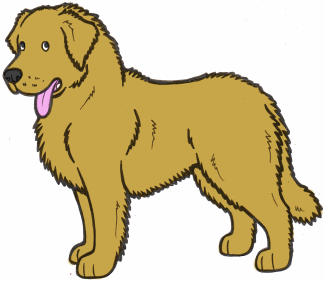
Normal extent of variation in masking in dogs.


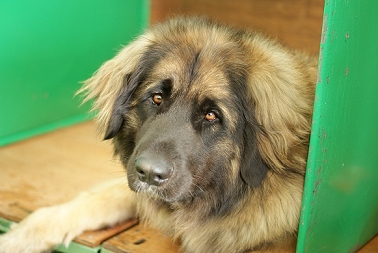
Sable Leonberger with a typical black mask.





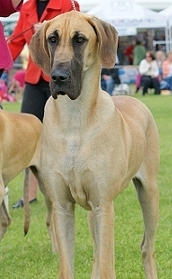
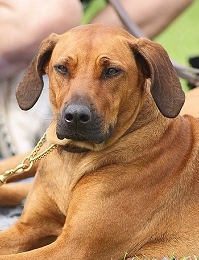
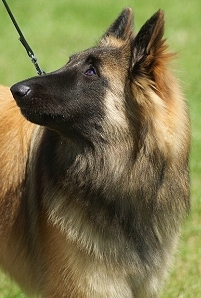
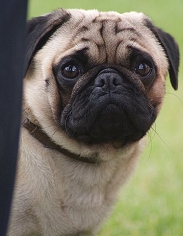
A variety of sable and saddled dogs showing the variations in extent of black masks. Note the black extending down the front of the chest on the Tervueren. Any of these variations may also be brindled.

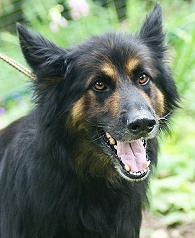
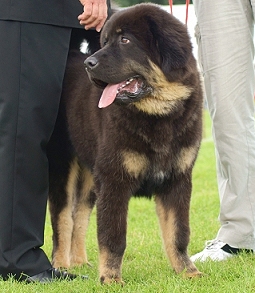
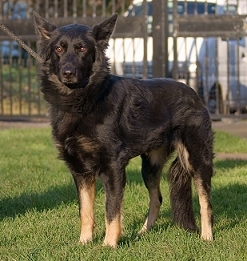
Three dogs with masks fully or partially covering the tan points on their muzzles.

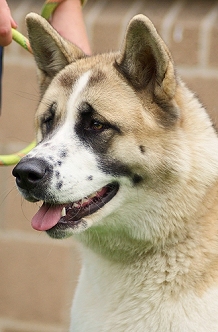
An Akita with white markings covering part of its black mask.

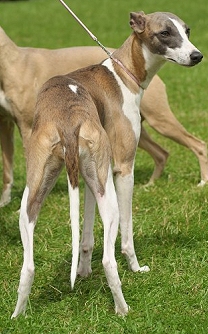
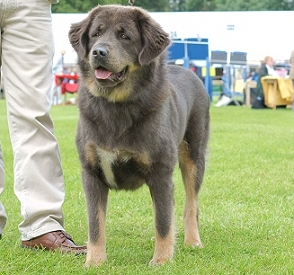
Whippet and Tibetan Mastiff with blue (dd) masks. On the Tibetan Mastiff the mask covers up the tan points on the muzzle.

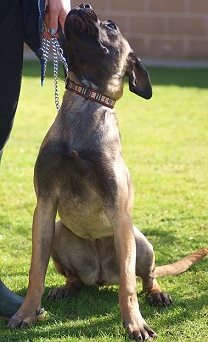
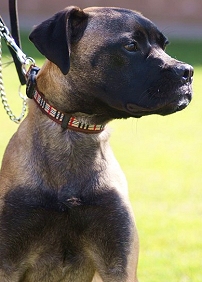
This Bullmastiff crossbreed shows clear black chest markings on a short-haired dog. Interestingly, these markings follow almost the same pattern as tan points or urajiro. Note the grey and black shading on the legs and feet too.

The three Malinois here, owned by Chelsey Protulipac, show how much the black leg and chest markings can vary. However, even the dog on the left, which has the least amount of shading, has some black on the inside of the hind legs and the underside of the body.
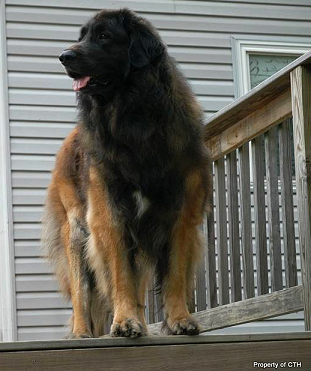
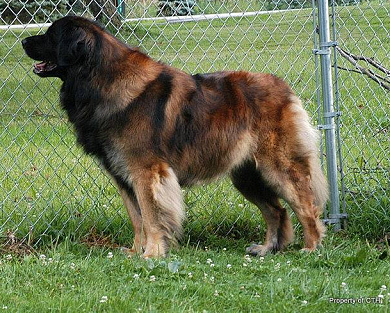
Argos and Riddick the Leonbergers have both mask-related shading (on their chests and legs) and sable-related shading (on their backs). These handsome dogs are owned by Cheryl Heinly and bred by Kathryn Wilson of The Leos Den.
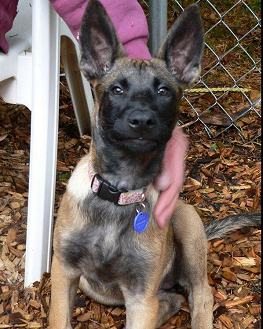
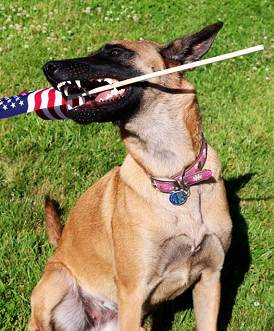
In some cases, the shading may fade as the dog ages. Kiwi, above, shows this nicely. Kiwi's photos were submitted by Elaine Senez Ableidinger.

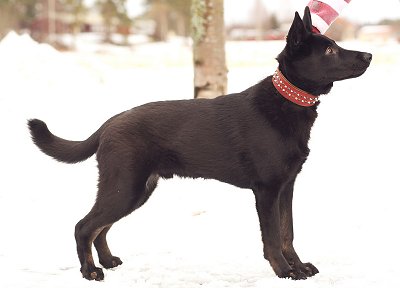
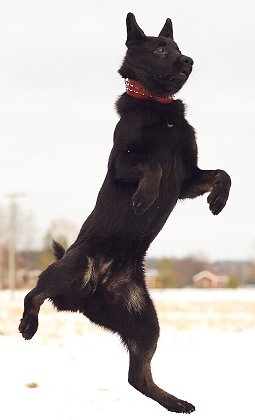
Extreme masking can also "hide" tan points. These photos of Astro, submitted by Oona Pesonen, show what this may look like. Astro looks almost solid black, but you can just about make out tan markings on his legs and underside. It's probable that the tan markings that should be on his chest and face have been covered up by the kind of extreme masking seen in the Malinois above.

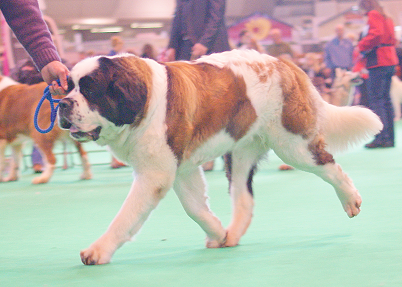
This St Bernard shows etching around the edges of its patches, which may be caused by extreme masking. Leonbergers, which were bred from St Bernards, display extreme masking, so it's very likely that it's present in St Bernards too.

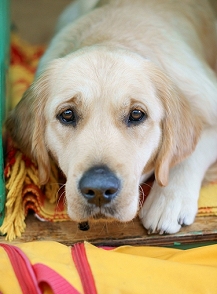
It's impossible to know from looking at a recessive red dog whether
it carries sable, tan points, brindle, or any other A or K locus gene, and so impossible to know what it will pass down to its puppies without a full genetic colour test. A recessive red dog could even be merle while still appearing solid red, and this is a big problem in any breed with both recessive red and merle. It would be easy
to accidentally breed two merles together if you weren't aware of how merle can be hidden. See the merle pages for
information on why merle to merle breedings can be problematic.


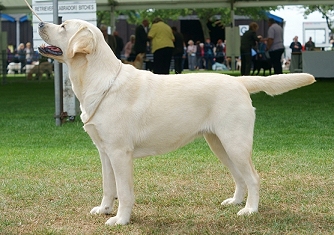
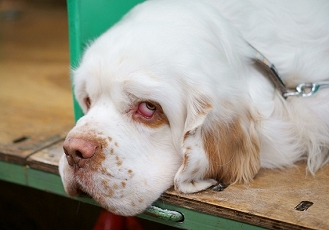
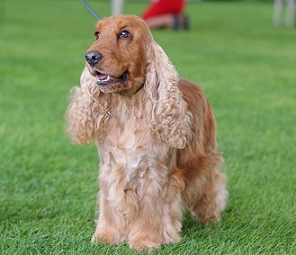
All three of these dogs are probable recessive reds. We know the Labrador must be genetically dominant black, because all Labradors are (see the Labrador case
study in the introduction section). The recessive red gene overrides the dominant black, turning it to red. We also know that the cocker spaniel must be recessive red because they do not carry Ay sable (only Eh, which can look similar - see below).

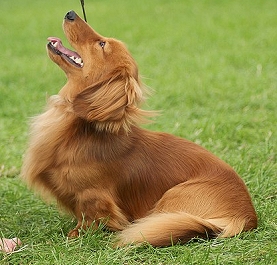
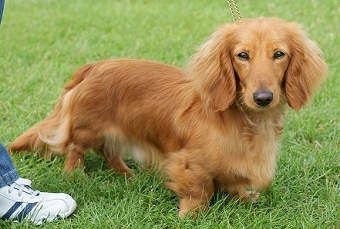
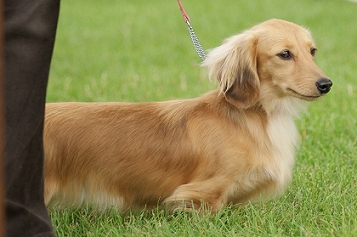
The Dachshund is a breed that comes in both sable and recessive red. It's therefore very difficult to tell which these three dogs actually are! The first dog has a little black on its tail and the third dog does appear
to show a few black hairs on its ear, in which case both are sables, but the middle dog has no visible black hairs at all and is potentially a recessive red.

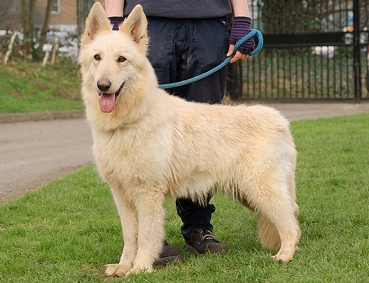
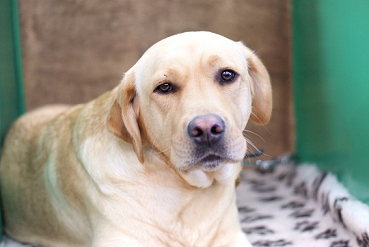
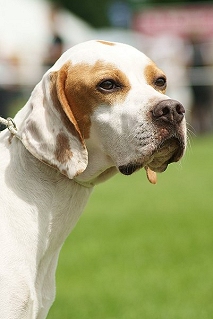
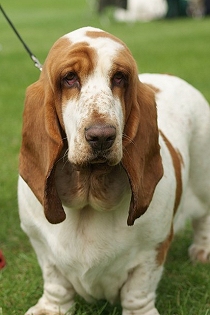
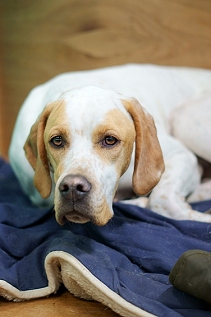
Above are examples of (presumably) recessive red dogs with pigment loss. Note how in all the examples, the lip pigment seems to stay darker than the nose or eye rims. In some dogs the whole pigment fades to a grey/blue, and others develop a "dudley" nose, where there is a strip of pink in the centre. It can be easy to mistake some of these
dogs for blues, but when compared to a true blue (see Dilution/D-locus page), the difference should become clearer. Of course, it is entirely possible for a recessive red dog to also be a dilute - but in this case the dog would be born with blue pigment.

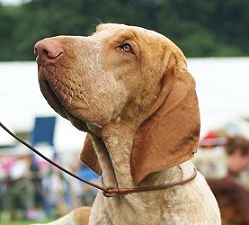
Liver (bb) recessive red dogs show more significant pigment loss than black (BB) recessive red dogs. We know this Bracco Italiano is a liver because the breed does not come with black pigment at all. Note how there is very little nose pigment - it is almost entirely pink. This can also be seen on breeds such as the Pharaoh Hound and Cirneco dell'Etna. In fact, most recessive red dogs with liver pigment will appear to have pink pigment. It is possible that the recessive red gene affects liver eumelanin to a greater extent than black eumelanin.

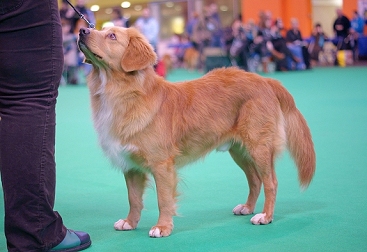
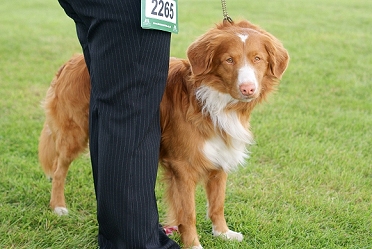
The Nova Scotia Duck Tolling Retriever comes in both black and liver pigment. The dog on the left shows black (but faded) pigment, and the dog on the right is a liver (note the bright pink again). Tollers can be phenotypically either sable or recessive red. Without genetic testing it is very difficult to tell, but for our purposes we will assume both dogs above are recessive reds as they have clear coats (no shading). Remember that liver shading can be very difficult to distinguish on a deep red coat though, adding an extra layer of difficulty to establishing the genotype of a dog such as a Toller. The faded pigment on the dog on the left is a very
strong indication that it is a recessive red as this would be much more unusual in a sable.


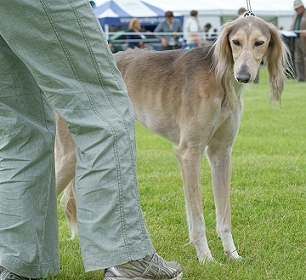
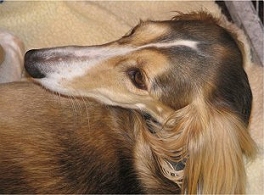
Another typical feature of a domino is a pink stripe down the centre of the nose, in line with the nose bar. This isn't present in all domino dogs, but can be a useful indicator for some.

A true domino will be either homozygous for Eg/A, or will have one copy of Eg/A and one copy of e (recessive red). However, E has a slight incomplete dominance over Eg/A, so an EEg/A dog may have some indicators that it is carrying domino. If it has tan points then these may be larger than normal, and there may be a pink nose stripe present (see below).
A sable domino will usually appear very similar to a clear sable or recessive red, although the patterning may be more obvious at birth and clear as the dog ages.
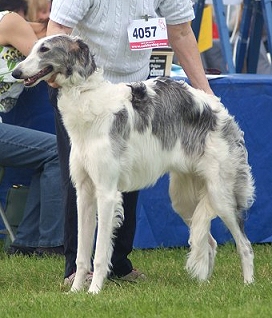
This Borzoi is a probable dominant black domino with brindle. This greyish colour is very typical of a KB domino.

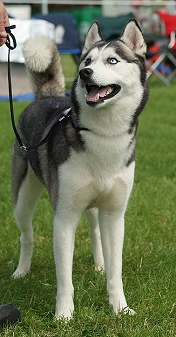
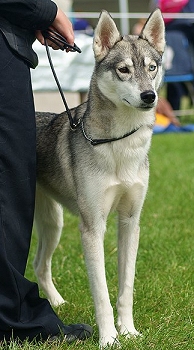
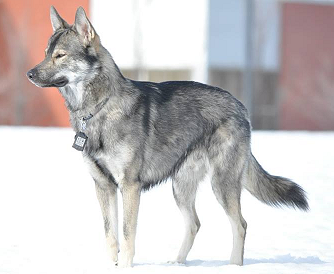
A probable tan-pointed domino Siberian husky (left), and agouti domino Siberian husky (middle), vs a non-domino agouti Tamaskan (right). The first Siberian husky has an extensive, classic presentation, typical of a tan-pointed domino. The second husky has a fairly minor expression of domino, more typical of an agouti. Note how bright and clear the points on both huskies are, and how they extend over the full front of the chest/neck and cheeks. The edges are much more clearly defined on the tan-pointed domino.
Most huskies and malamutes have extremely pale phaeomelanin, that appears white. Domino seems to have some effect on phaeomelanin intensity, but as you can see from the sighthound examples above and below, it isn't the full reason for the white points on Northern breeds.
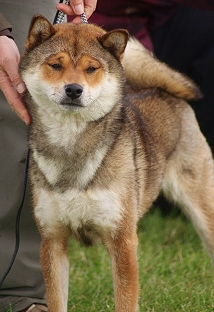
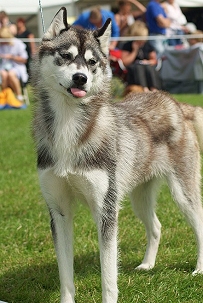
It's important to distinguish between Northern domino and urajiro. This Shiba Inu displays urajiro (see C & I locus page), which dilutes phaeomelanin to white, on the point areas only. As you can see, the pattern is superficially quite similar to the husky on the right. However, urajiro works only on tan/red that is already present on the dog, and does not have the wide-ranging effects on eumelanin distribution that the domino gene does.

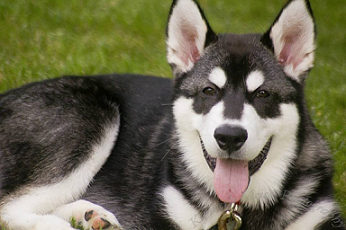
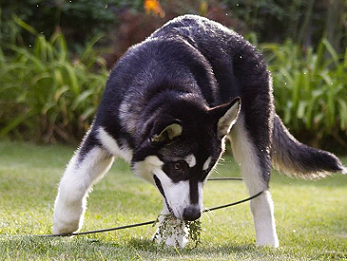
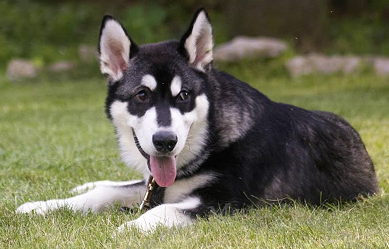
Baal the Alaskan Malamute puppy - photos by Justin Rutledge
This colour is known as "seal" in Alaskan Malamutes, but is not the same as the seal found in other breeds.
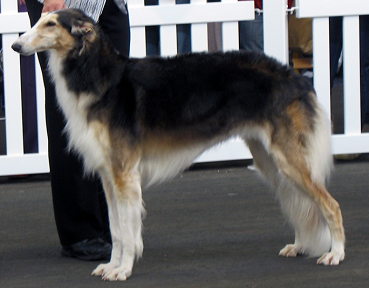
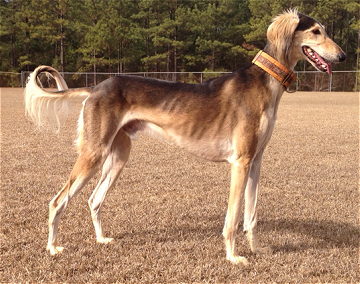
Typical tan-point domino (Eg) Borzoi, submitted by Emily Leamon, and medium-shaded grizzle Saluki, submitted by Lauren Johnson. This shade in Salukis is known as "deer grizzle", and most also appear to be tan-pointed dominos when tested.

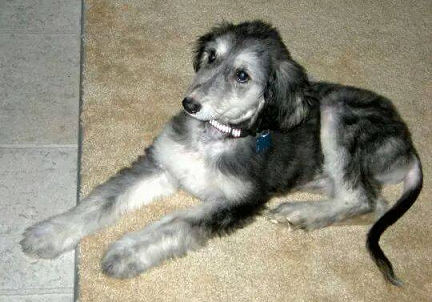
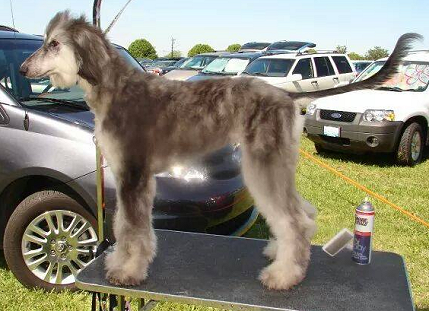
Kryslaur's High Flyer (Flyer), submitted by Shawn Snead, is a domino Afghan Hound. His red areas have been "diluted" to white (see I locus page). However, Flyer is also a brindle. The effect of brindle on grizzle is fascinating, as it seems to produce the opposite effect to brindle on sable or tan points. Usually brindle is confined to red (phaeomelanin) areas and does not appear on black (eumelanin) areas, however on a grizzle it appears to do the impossible. As you can see, Flyer's black areas are brindled but his red areas (points) are not. Some grizzles will show brindling on their tan areas, but in almost all cases it fades towards the feet.
This is interesting because it suggests that the red/tan areas on a grizzle are essentially the same as recessive red - i.e. the cells are unable to produce eumelanin (black) pigment. It may be that the grizzle pattern is caused because the ability to produce eumelanin is reduced towards the outer "points" of the dog (muzzle, chest, legs etc) due to a fault in the allele. If this is true, grizzle could be considered "partial recessive red".
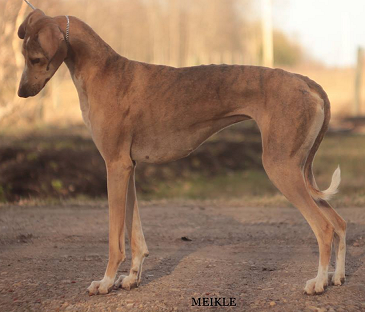
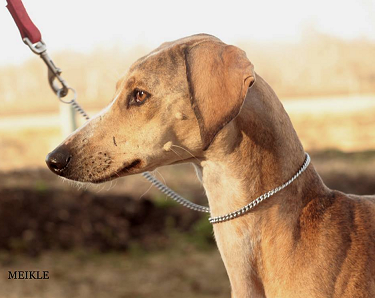
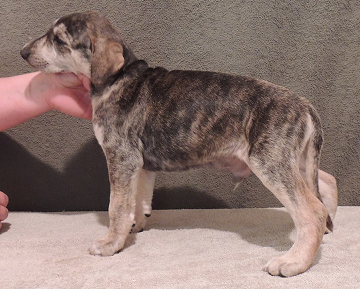
The photos above, taken by Tara Meikle, show the same phenomenon in Salukis. The first dog may be a sable domino, as there is very little shading present.

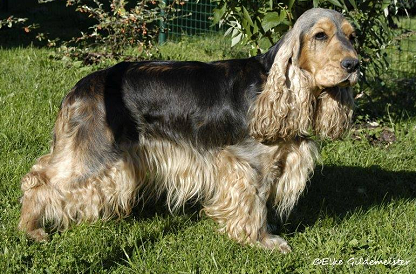
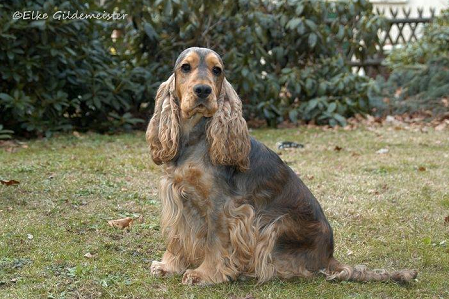
These photos show the sable English Cocker Spaniel "Andara vom Luthersbrunnen", taken by Elke Gildemeister. Note how the pattern is extremely similar to the Eg sighthounds in the section above, with extended points around the eyes and a clear nose bar.

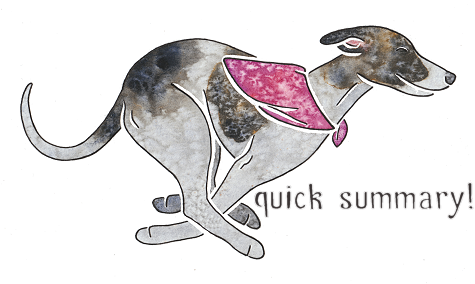
No time to read the whole thing? Here's the quick version!

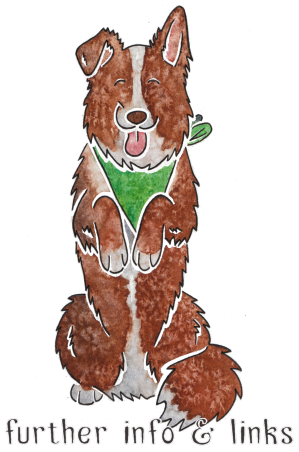
A new mutation in MC1R explains a coat color phenotype in 2 "old" breeds: Saluki and Afghan hound: http://www.ncbi.nlm.nih.gov/pubmed/20525767
MC1R studies in dogs with melanistic mask or brindle patterns: http://www.ncbi.nlm.nih.gov/pubmed/12692165

